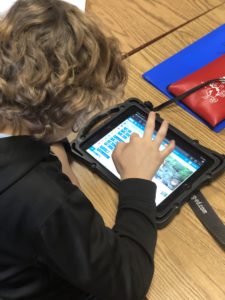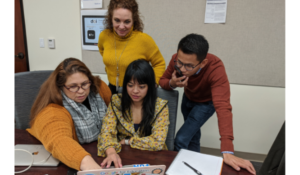[vc_row][vc_column][vc_custom_heading text=”3 Things That Can Help Make Digital Learning Successful” font_container=”tag:h3|font_size:34px|text_align:left|line_height:1.5em” google_fonts=”font_family:Roboto%20Slab%3A100%2C300%2Cregular%2C700|font_style:400%20regular%3A400%3Anormal”][vc_column_text] Let’s face it. The day is rapidly approaching when every student, in every school, across the country will be using a device in school. Or, for that matter, TWO devices! Many districts have already started the process of embracing this reality and shifting towards more digital learning environments.
Let’s face it. The day is rapidly approaching when every student, in every school, across the country will be using a device in school. Or, for that matter, TWO devices! Many districts have already started the process of embracing this reality and shifting towards more digital learning environments.
This road has been bumpy for most, if not all, of us who are at some stage of the transition. How has this process been for you? Has it been smooth sailing? Rocky and tumultuous? A little scary? Most likely, a little of each.
Any district delving into digital learning ultimately wants to do it well. ISTE knows this and developed the Essential Conditions for Effective Technology Integration. There are fourteen essential conditions in all. Below are three key elements derived from those that must be present to establish a foundation for success.[/vc_column_text][vc_custom_heading text=”Generate Buy-in” font_container=”tag:h3|font_size:24|text_align:left|line_height:1.5em” use_theme_fonts=”yes”][vc_column_text]If stakeholders aren’t assembled, engaged and given a voice, you will be playing from behind. We’re not talking about pulling together just a “technology committee” here. Many times, those committees are assembled as a courtesy when decisions have already been made. According to John Kotter, author of Leading Change, one reason organizational change fails is due to lack of a guiding coalition.[/vc_column_text][vc_custom_heading text=”Collect Data” font_container=”tag:h3|font_size:24px|text_align:left|line_height:1.29em” use_theme_fonts=”yes”][vc_column_text] This takes multiple forms. First, know where you’re at. It’s always a best practice to have that baseline to set the stage for measuring growth. Once you have that data, put a plan in place that allows for targeted professional development based on the baseline data you collected. Finally, continually reflect on the data that’s been collected. You will also want to have intentional dialogue about what’s working and what’s not. Oh…remember to involve your guiding coalition mentioned earlier to ensure that necessary buy-in.[/vc_column_text][vc_custom_heading text=”Provide Continuous Instructional Support” font_container=”tag:h3|font_size:24px|text_align:left|line_height:1.29em” use_theme_fonts=”yes”][vc_column_text]Lack of time and support are two barriers teachers face when seeking professional learning. With before and after school time becoming increasingly difficult to leverage, providing job-embedded support needs to be an option. Here is where coaching becomes the solution. Research (Joyce & Showers, ASCD 2002) tells us coached teachers, by far, are more likely to transfer learning to practice within a structured coaching model. Having a partner to plan, co-facilitate, and reflect with, teachers have the necessary context and support to move forward.
This takes multiple forms. First, know where you’re at. It’s always a best practice to have that baseline to set the stage for measuring growth. Once you have that data, put a plan in place that allows for targeted professional development based on the baseline data you collected. Finally, continually reflect on the data that’s been collected. You will also want to have intentional dialogue about what’s working and what’s not. Oh…remember to involve your guiding coalition mentioned earlier to ensure that necessary buy-in.[/vc_column_text][vc_custom_heading text=”Provide Continuous Instructional Support” font_container=”tag:h3|font_size:24px|text_align:left|line_height:1.29em” use_theme_fonts=”yes”][vc_column_text]Lack of time and support are two barriers teachers face when seeking professional learning. With before and after school time becoming increasingly difficult to leverage, providing job-embedded support needs to be an option. Here is where coaching becomes the solution. Research (Joyce & Showers, ASCD 2002) tells us coached teachers, by far, are more likely to transfer learning to practice within a structured coaching model. Having a partner to plan, co-facilitate, and reflect with, teachers have the necessary context and support to move forward.
These are helpful to keep in mind as you move forward with digital learning or any large scale initiative in your school or district.[/vc_column_text][/vc_column][/vc_row]

